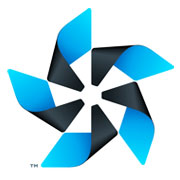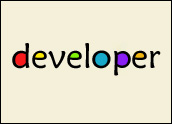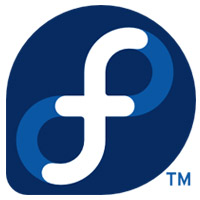
The consumer electronics industry has a secret ingredient: the Tizen operating system. It is alive and well and may control a device you now use or the next one you buy.
That might surprise some early adopters who watch eagerly for the next bleeding-edge electronics device. Many of those who have heard of Tizen are under the impression that it has no consumer or developer-ready devices in the market place. They’re wrong.
Tizen already is fully developed as an operating system and deployed in numerous product lines. They typically have the word “smart” in their name — you know, things like smartTV, smartphone, smartwatch, smartcamera and yes, smart refrigerator. It can be found in in-vehicle infotainment systems as well.
“Tizen has been used in products for a long time before it was even formally announced,” Brian Warner, director of client services and operations at the Linux Foundation and manager of the Tizen Project, told LinuxInsider.
“To be honest, this does not surprise me. The whole point in buying a camera is to take some nice photographs — not what the operating system is,” he said. “It is not a question of how many units did Tizen sell in the first quarter after being introduced. Instead, Tizen came out with a whisper and not with a bang.”
Tizen Basics
Tizen is an open source project housed within the Linux Foundation. The Tizen Association last year launched a partner program with 36 companies from all segments of the mobile and connected device ecosystems.
Its purpose is to help accelerate the development and commercialization of the Tizen OS. The partners include operators, application developers and independent software vendors.
Rather than courting consumers, the Tizen Association is ramping up its focus on developers with commercial devices now available so they can easily port existing apps to Tizen.
In fact, the upcoming third annual Tizen Developer Conference in June will explore the new opportunities Tizen is creating in the new era of the Internet of Things.
In this exclusive interview, LinuxInsider discusses with Brian Warner why the Tizen Project is starting to cause a stir as it challenges Linux and Android as the preferred embedded control system for smart devices.
LinuxInsider: Is Tizen expected to replace Android and Linux as alternatives to iOS and Windows Phone platforms, or is it designed for more than mobile computing?
Brian Warner: The original idea behind Tizen was the concept of creating a divergence operating system. The goal was to create something that would work for different types of devices. One of them was a mobile phone. For a number of years what everybody wanted to talk about was the phone, because that is where the drama is. The market contest was thought to be between Samsung versus Google versus anything else in the market.
While all that was going on, Tizen quietly grew into favor with a variety of other products. So as a convergence operating system, we are definitely seeing the fruits of that. A number of cameras that came out are running Tizen. Since last year, there are also refrigerators and TVs coming. So we really are seeing Tizen getting a lot of uptake in a lot of things other than phones.
LI: How is Tizen different from other platforms so far?
Warner: On one hand, you could say that Tizen really is not much different from the way other companies were using Linux and open source. It just so happens that Samsung has a brand name associated with what they are doing with Tizen.
If you look at what many consumer electronics developers were doing, many of them standardized on a single convergence platform such as WebOS, or would buy something from Wind River. Or maybe you use different ways to get to your internal operating system. But either way, pretty much everybody standardized on something.
LI: You refer to Tizen as a convergence platform. What is it structurally, a spinoff of a Linux distro or Android, or something else entirely?
Warner: I would say Tizen is like a Linux distro without really being a full distro. When we think of a Linux distro, we envision a preinstalled set of packages that are supported with a repository for updating. Tizen is very similar to that. It does provide a Linux kernel, the core utilities, a display and a user interface.
It has everything you would need to run a device. But Debian Linux, for instance, has an extensive repository. Tizen does not have that. A good way to look at Tizen would be as something like Android without the Google Play Store. It is an operating system. It comes with a separate store that comes along with it. Right now, that is being provided by Samsung. So Tizen is a real operating system.
LI: That said, is it accurate to classify Tizen as a fork of Android, which is a form of Linux, or as another flavor of Linux?
Warner: Tizen is a flavor of Linux. It is definitely not a fork of Android. That would imply that it incorporates nearly all of what Android is. I would say that Tizen is a Linux-based operating system. If you look at the broader picture and think beyond Samsung, Intel would probably say it wants people building embedded devices to use the Intel chip to consider using Tizen as an operating system for that device.
LI: So Intel is already using Tizen to run its embedded chips?
Warner: Yes, if you look at the embedded industry and in particular the System on a Chip (SoC) platters, the chip maker has to provide an OS to go along with it. It does not matter whether you are providing a plug-in card or a whole System on a Chip. Whoever you are providing it to is going to say, “I need to have something that will actually boot this thing up and have an interface to it.”
One of the things we are hearing from Intel very strongly has been that they want Tizen considered for all types of devices. This is a valid option that makers can use as they are putting together their embedded devices.
LI: How different will the Tizen user experience be for one of the consumer electronics market’s most wanted product, the phone?
Warner: It comes down to when you start the device and see the controls, the user interface it has does not have to be the user interface it was shipped with. Think in a much broader direction. Think about the evolution of the smartphone market.
The arrival of the iPhone was the first thing that actually convinced us we should be concerned with what is in our pockets. We care about apps. We care about updates. We care about available memory. Then the Android phones came out. Everyone in the industry learned that there is room for more than just Apple in the smartphone marketplace.
LI: Still, everything still looked the same — so how will a Tizen device disrupt the market?
Warner: But then different Android phone makers altered the look and the interface so specific phones started to stand out from the others on the shelf. We had all these different user interfaces — for instance, TouchWiz and Sense. The result was that all of these different interfaces fragmented the heck out of Android.
LI: But isn’t that degree of differentiation good for individual device makers?
Warner: That fragmentation convinced these companies that there was money to be made with smartphones, but then eventually Google stepped in and said the fragmentation was out of control. Google started to bring everything back into line. What you find now is that when you shop for Android phones in the store, they all pretty much look the same.
LI: Why won’t that happen with Tizen if device makers can make their own modifications?
Warner: When you look at Tizen, a lot of the companies working with the Tizen Association said that this model worked very well for Android — but the Tizen companies want to be able to innovate on interface and stock apps but are not able to do that with Android. So the individual phone makers are now going to be able to take the stock Tizen interface off and replace it with something that will let it look different than everything else on the shelf.
So when a user picks up a Tizen device, he is not going to see one clearly branded Tizen screen. Tizen is going to be under the hood. That is the big appeal to product developers. They can put their own spin on what the end-user is going to be looking at and still have Tizen under the hood and not compete with something else that looks the same way.
LI: How does this support the concept of open source?
Warner: The value of using open source is that you are not reinventing the wheel. There is zero strategic value in redeveloping an operating system. If your competitors are all using Linux anyhow, they are going to get a multiyear jump on you in getting their product to the market unless you are using open source. In this case, Tizen is the skeleton, but the clothes you put on it is up to the developer to decide. That is the big distinguishing characteristic from everything else that is out there.
LI: How does Tizen play out that open source concept in other product markets?
Warner: Everything we have available so far with Tizen has a user-focused air about it. The users have no reason to focus on the operating system. For example, if it is a camera, the only concern is how long from the time I turn on the camera can I take a photo? For the smartwatch, it is how long is the battery going to last? For a smartTV, the consumer’s question is how long does it take to boot up into the navigational system? For a refrigerator, it is how cold does it keep the fruit? These are the things users care about. They do not care about what is the operating system. That was the whole idea about taking that question off the top of the device. You should not care about that.
LI: How is Tizen different in controlling a broad base of products when embedded Linux and other embedded proprietary operating systems are already being used?
Warner: In most, if you are a manufacturer, you have to roll your own OS version. Or you take something like Android and take the UI off and hack it to the point that it will fit in to whatever your design is. The real value in Tizen is that it frees manufacturers from having to maintain their own in-house version of Linux. Instead, this provides something where thoughtful companies can get together and work on this common piece of technology.
LI: Why will that approach not allow groups of manufacturers to create a version of Tizen that essentially fragments the ecosystem?
Warner: To be totally clear on the fragmenting issue, one of the purposes of the design of Tizen is to allow for specialization without getting fragmentation. The goal of the Tizen Association is to ensure that all of the common elements that manufacturers need are in place — things like all of the libraries and drivers, for instance.
But with Tizen, these elements are underneath what the user sees or uses directly. We do not care how the icons are laid out on the screen. You can use squares. You can use circles. You can use whatever you want. As long as the things that are down below the surface of the user’s level function, then we avoid that fragmentation.




















































